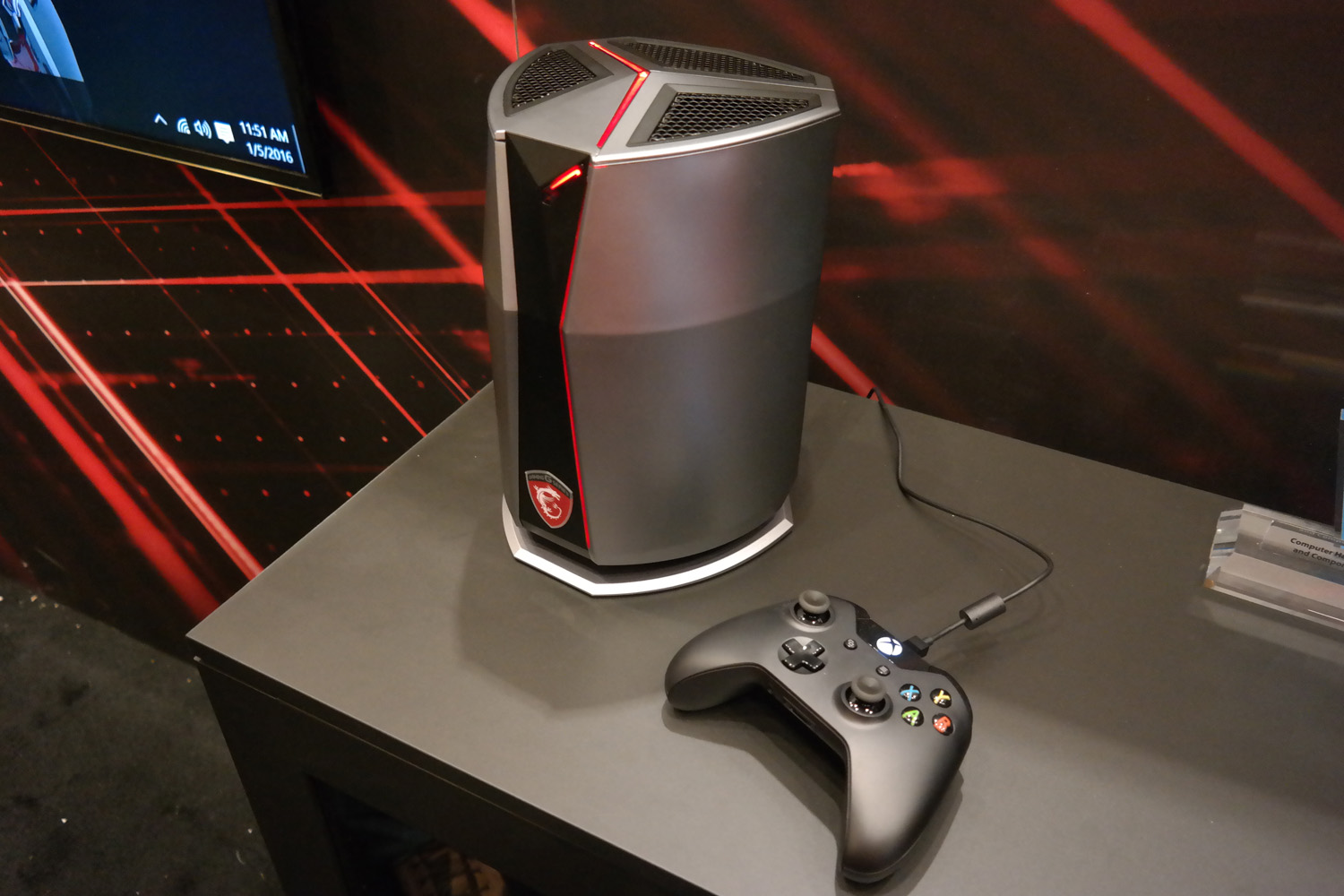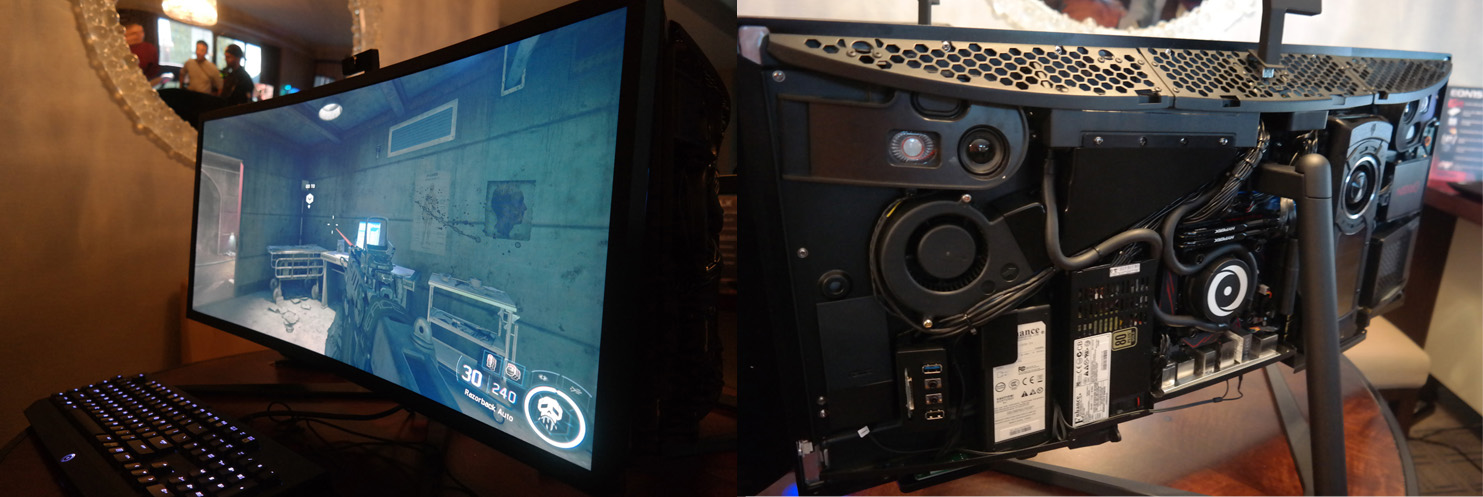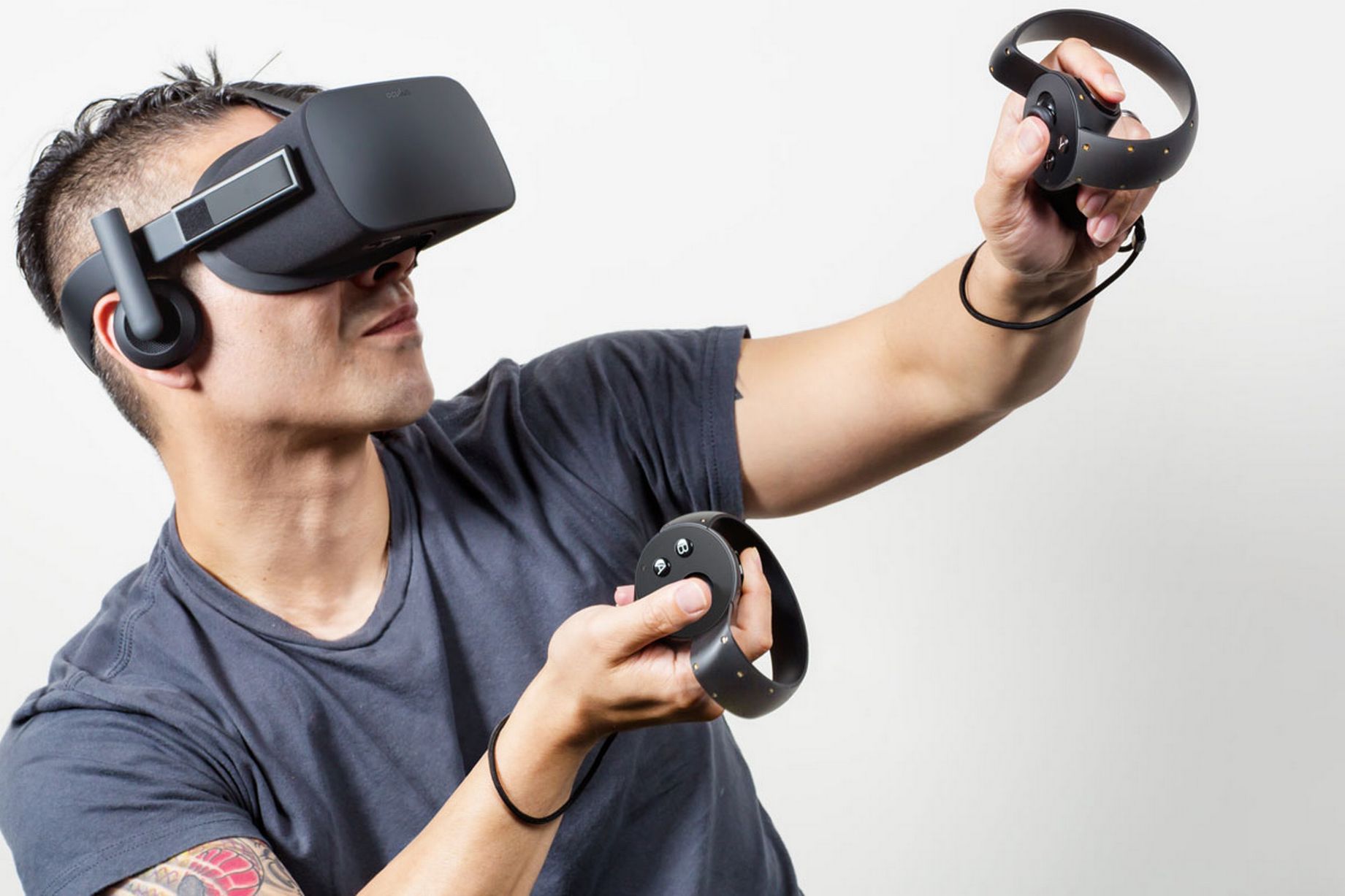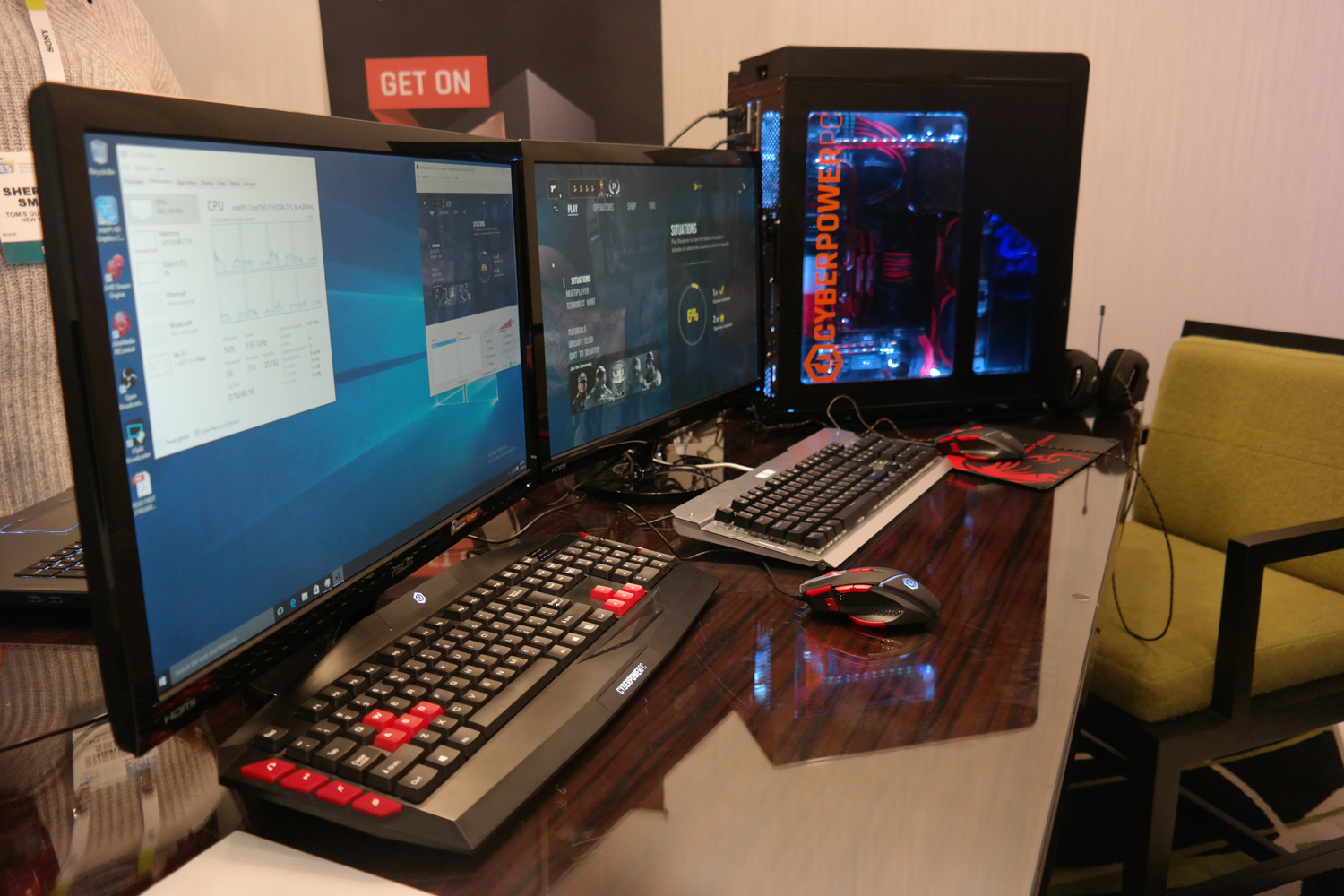PC Gaming's Future: Living Rooms, Live Streams and VR
PC gaming is getting even more accessible and diverse in 2016. Here are the trends to look out for.
There was a time when PC gaming seemed reserved for an elite few who had the space, time and technical know-how needed to build a rig capable of playing the latest games. Nowadays, however, it's not all that hard to pick up a powerful and sleek gaming desktop, stick it under your TV, and enjoy 4K — and even virtual-reality gaming — with the same convenience that you'd get from booting up a much less powerful Xbox One.
Just as gaming machines get more user-friendly, so do the accessories that accompany them. Gadgets such as gaming mice, gaming keyboards and webcams were an afterthought a decade ago. Now, they're largely designed to help gamers become high-level competitors and popular Twitch stars. PC gamers have tons to be excited about in 2016 and beyond — here are some of the bigger trends to look out for.
The Changing Shape of the Gaming PC

If I told you MSI's compact, coffee-pot-sized Vortex PC was capable of storing dual graphics cards playing games in 4K, you'd probably laugh. But it's true; the Vortex is just one of many machines that challenge the very notion of how a gaming PC can look. PCs such as the Alienware X51, Origin Chronos and Maingear Drift all look like really fancy consoles just begging to be placed in your entertainment center. But these machines are all powerful enough to play modern games at their full potential.
High-end components are finding their way into places gamers never thought they'd see such tech, and the trend isn't limited to standard desktops. Origin's Omni (estimated $1,999 starting) is one of several new customizable all-in-ones that pack desktop-grade parts. This allows you to stick up to a 6th-Gen Intel Core i7 processor and beefy Nvidia Titan X graphics behind the Omni's curved, 34-inch display.

Thanks to new graphics amps from the likes of Asus and Razer, just about any laptop can transform into a beastly gaming machine. The Razer Blade Stealth (starting at $999) plugs in to a Core dock that houses whichever high-end graphics card you choose, allowing you to enjoy an impressive ultrabook on the go, and desktop-level gaming performance as soon as you get home.
Many of this year's most powerful gaming PCs look like really fancy consoles just begging to be placed in your entertainment center.
If you don't have the space for all of that gear, a new breed of gaming laptop packs full-on desktop graphics cards while remaining light enough for the road. Examples include the MSI GT72 ($3,099) and Aorus X7 DT (price TBD), the latter of which was light enough for us to strap the machine to our backs while doing some VR gaming.
Virtual Reality Is Ready for Your Home
It's a good thing gaming PCs are more powerful and mainstream-ready than ever, because 2016 is looking like the year that virtual reality truly takes off. The Oculus Rift and HTC Vive headsets are set to ship in March and April, respectively, meaning it won't be long before you're transported to virtual worlds where you can scare yourself silly, explore new planets or just shoot a bunch of stuff.
Get instant access to breaking news, the hottest reviews, great deals and helpful tips.

Arguably the most recognizable name in VR, the Rift will offer a bevy of immersive gaming experiences that range from the colorful platforming of Lucky's Tale to the intense space combat of Eve: Valkyrie. You can even use your PC to stream Xbox One games to the headset, which allows you to play the console's titles in a virtual-theater view.
The Vive takes a different approach, offering motion-tracking capabilities that let gamers walk around and interact inside a 15-by-15-foot virtual space. HTC's headset will ship with touch controllers and is co-developed by Valve, the gaming software heavyweight responsible for the PC games marketplace Steam.
MORE: VR Headsets: What You Can Buy and When

VR certainly won't be cheap; the Rift costs $599 and requires a PC with at least an Nvidia GTX 970 (or AMD 290) graphics card, an Intel i5-4590 processor, 8GB of RAM, two USB 3.0 ports, and Windows 7 or newer, among other necessities. We're expecting similar pricing and requirements for the Vive.
Fortunately, PC gaming's biggest players seem determined to make the jump to VR as painless as possible.
Nvidia's "VR Ready" seal of approval lets shoppers know when a machine or graphics card can handle virtual reality. Alienware is offering a special bundle, selling its X51 desktop with an Oculus Rift at a discount — and it could ship even earlier than the stand-alone Rift.
Broadcasters, Competitors Come First
It's clear that live streaming is gaming's next big thing. Popular website Twitch hosts more than 1.5 million broadcasters who stream their game-play antics to the service's 100-million-plus monthly viewers. Makers of gaming hardware are keenly aware of this phenomenon, and you can expect plenty of new gadgets in 2016 created specifically for those who do most of their gaming while sitting in front of a camera.

Take the Razer Stargazer ($199), which is an Intel RealSense-enabled webcam built for broadcasters. On top of offering gesture controls and smooth, 60-frame-per-second video capture, this 3D-scanning camera can seamlessly superimpose your face on top of whatever game you're streaming, an effect that would otherwise require you to buy and set up a fancy green screen.
This dedication to live streamers extends to PCs themselves. CyberPower's Pro Streamer ($1,899 starting) is a gaming desktop for the Twitch crowd, offering two completely independent PCs within a single box. This solves a performance-load problem that previously required streamers to have two dedicated desktops — one for playing, one for broadcasting — in order to produce the smoothest stream possible. Now, you can enjoy that same optimal level of performance without sacrificing the space or cash required to have two big towers sitting on your desk.

As hot as live streaming is, accessory makers haven't forgotten about their core customers: tournament-level players. Display veteran ViewSonic is launching its first dedicated gaming monitor lineup this year, just as gaming monitor heavyweight BenQ is getting set to expand into mice, keyboards and headsets.
MORE: The Ultimate Guide to Twitch Streaming
A 2015 report from SuperData claims that around 134 million people watch e-sports, the professional side of competitive gaming; it's only natural that companies are offering even more gear for those looking to become the next pro superstar.
Outlook
If there's one constant among all of these trends, it's that PC gaming is growing more accessible and diverse all at once. If you're a casual living-room gamer, an avid VR enthusiast or looking to become a full-time Twitch celebrity, you shouldn't have too much trouble finding the right gear for your needs. The days of PC gaming being a members-only club are long over; there's never been a better time to dive in.
Mike Andronico is Senior Writer at CNNUnderscored. He was formerly Managing Editor at Tom's Guide, where he wrote extensively on gaming, as well as running the show on the news front. When not at work, you can usually catch him playing Street Fighter, devouring Twitch streams and trying to convince people that Hawkeye is the best Avenger.
-
TechyInAZ I look back years ago, and I do remember when there were only a select group who could build high end rigs for the best gaming expereince, but now look, building a high end gaming PC is just as accessable as an xbox or PS4 these days.Reply
Without a doubt PC gaming and PCs in general are going to dominate our society without any direct competitors. There is no way xbox or PS will survive in the next 5 years in my opinion, unless they make them dirt cheap or switch over to full on PC components.

